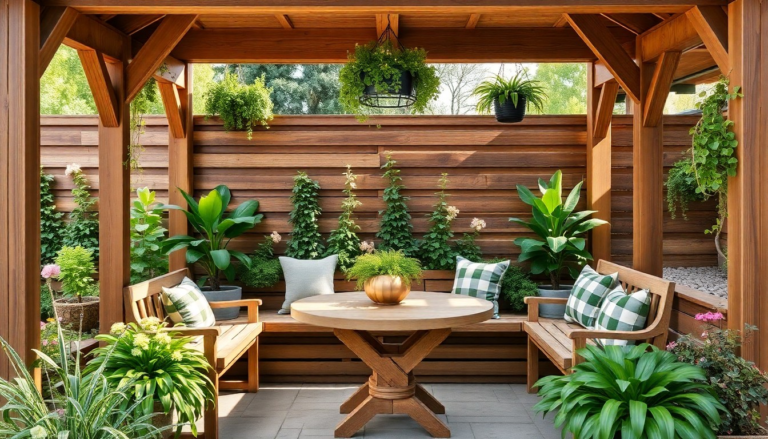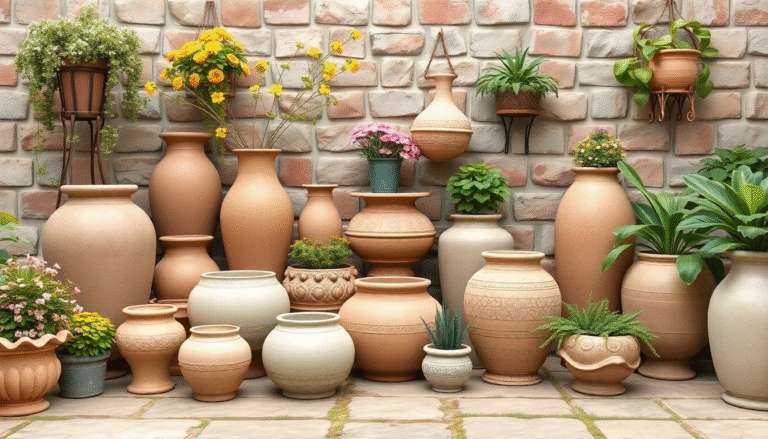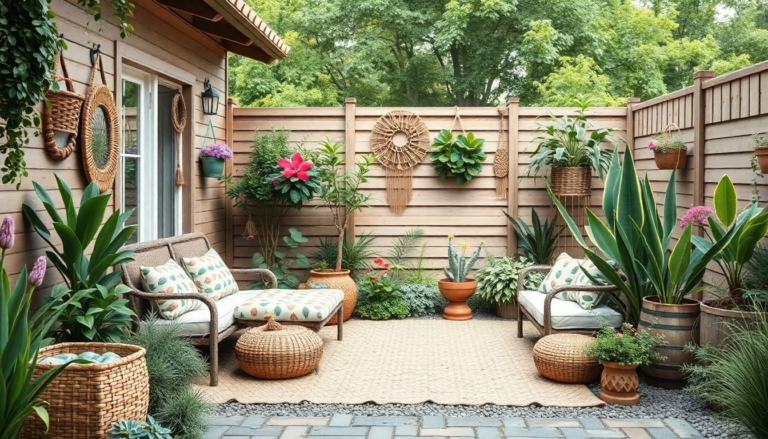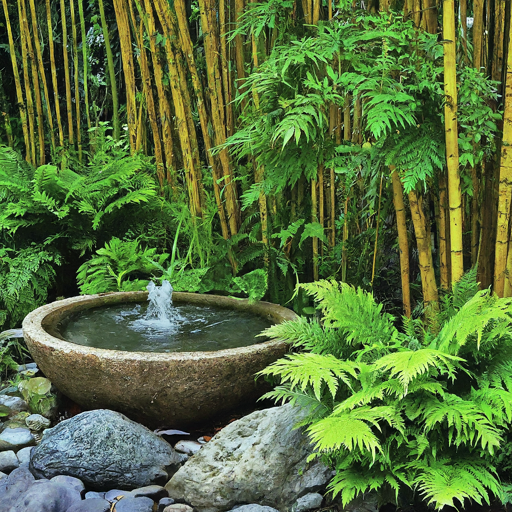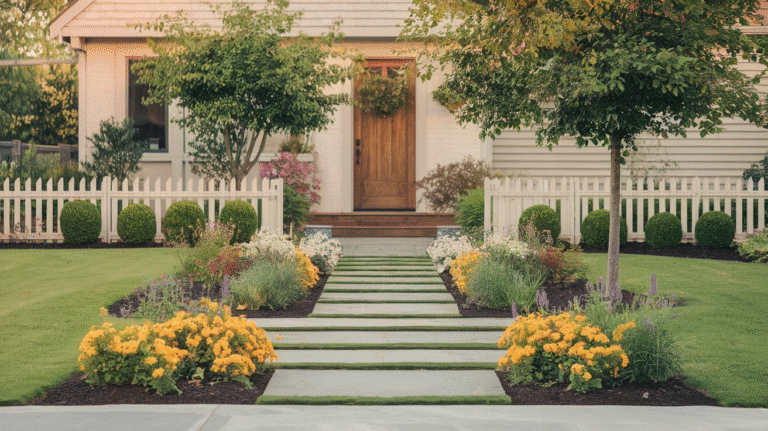21 Low Maintenance Landscaping Front Yard Ideas

The front yard is your home’s first impression—a curbside hello to anyone passing by.
But what if you don’t have the time, energy, or budget for high-maintenance greenery? Good news: you can still have a stunning front yard without babysitting your landscape every weekend.
I used to think having a beautiful front yard meant I had to become a full-time gardener. Turns out, I just needed smarter choices.
These ideas are for real people—the busy ones, the budget-conscious, the “I forgot to water my plants again” folks.
Let’s dig into 21 low-maintenance landscaping ideas that are as easy to manage as they are beautiful.
1. Go Native With Plants That Thrive on Their Own
Native plants are like the introverts of the plant world—they thrive best when left alone.
They’re already adapted to your local climate, which means less watering, fewer pests, and way less stress for you.
Why it works:
- Requires less water (up to 60% less according to the EPA).
- No need for fertilizers or pesticides.
- They attract helpful pollinators like bees and butterflies.
Example: If you’re in the Southwest U.S., desert marigold or agave will flourish. In the Southeast? Try coneflowers or coreopsis.
2. Swap Grass for Ground Covers
Traditional turf grass is like a needy pet—it constantly craves water, food, and grooming. Ground covers, on the other hand, are the chill cats of landscaping.
Great options include:
- Creeping thyme – aromatic and drought-resistant.
- Sedum – a succulent that thrives in poor soil.
- Clover – naturally fertilizes your soil.
Ground covers reduce mowing, limit weeds, and stay green longer—talk about a win-win-win.
3. Use Mulch to Your Advantage
Mulch is like the superhero cape of landscaping. It shields the soil, suppresses weeds, and keeps moisture locked in.
Organic mulch (wood chips, bark, pine needles) breaks down over time, enriching your soil.
Rubber mulch or gravel? Even lower maintenance—just set it and forget it.
Pro tip from my own trial and error: don’t pile mulch against your house’s siding or tree trunks.
That’s like wrapping a scarf too tight—you’ll cause more harm than good.
4. Ditch the Lawn for Decorative Gravel
Replacing your lawn with decorative gravel is like going from a fussy fern to a Zen rock garden—peaceful, neat, and zero fuss.
Perks of gravel:
- No watering or mowing.
- Adds clean, modern appeal.
- Comes in different colors and textures.
You can even create defined walkways or patterns using gravel and stone borders for a custom look without custom effort.
5. Opt for Perennials Over Annuals
Planting annuals every spring is fun… once. By the third year, it feels like a chore. Perennials, however, come back year after year with minimal care.
Some hardy perennials include:
- Black-eyed Susans
- Hostas
- Daylilies
- Lavender
And trust me, watching them return each year is like having a dependable old friend come back to visit—no calls, no maintenance, just loyalty.
6. Use Raised Beds with Built-In Irrigation
Raised beds aren’t just for veggie gardens.
They’re a stylish way to add structure to your front yard while controlling weeds and reducing the need to bend or kneel.
Add a drip irrigation system to automate watering.
You can hide the tubing beneath mulch or rock—set it on a timer, and forget it. That’s what I do, and my plants are thriving even when I’m traveling.
7. Plant Drought-Tolerant Shrubs
When you want greenery that doesn’t guilt-trip you for missing a watering day, turn to drought-tolerant shrubs.
They’re hardy, sculptural, and provide year-round interest.
Top picks:
- Boxwood – great for low hedges.
- Barberry – colorful and deer-resistant.
- Juniper – fragrant and evergreen.
They’re your “set it and forget it” foliage friends.
8. Try Artificial Turf (Hear Me Out)
I resisted artificial turf for years—until I saw my neighbor’s front yard looking like Augusta National in August. And he hadn’t touched a hose.
Today’s synthetic grass is far more realistic than the stuff from the ‘90s.
Benefits:
- Stays green year-round.
- No watering, mowing, or fertilizing.
- Pays for itself in about 5 years through water savings and maintenance costs.
9. Install a Dry Riverbed
A dry riverbed is a gorgeous way to deal with runoff, erosion, or empty space—and it’s as artistic as it is practical.
All you need:
- Mixed sizes of stones and gravel.
- Edging plants or low-growing perennials.
- A curved, flowing design to mimic nature.
It’s basically landscaping’s version of minimalism with flair.
10. Use Low-Maintenance Trees Strategically
Trees bring shade, structure, and long-term value—but choose the wrong one, and you’ll be raking leaves for a decade.
Go for:
- Crape myrtle – beautiful bark and blooms.
- Amur maple – compact and colorful.
- Japanese snowbell – elegant and low-litter.
Plant them away from foundations and sidewalks, and you won’t have to deal with cracked concrete or root drama.
11. Add Hardscaping Features
Think benches, retaining walls, or stone borders. These not only create visual interest but also reduce the amount of space you need to plant or water.
I added a low stone wall and suddenly had less garden to maintain and a spot to sip my coffee. It’s a lifestyle upgrade with landscaping perks.
12. Focus on Symmetry for Easy Design
Want something that looks high-end but isn’t high-effort? Use symmetry. It’s a shortcut to visual harmony.
Plant matching shrubs or ornamental grasses on either side of your entry. Use identical planters.
This immediately boosts curb appeal and keeps your decisions easy and repeatable.
13. Embrace Ornamental Grasses
Ornamental grasses are the wind-chimes of your yard—they sway, shimmer, and sing in the breeze.
Low maintenance varieties include:
- Feather reed grass
- Blue fescue
- Switchgrass
They don’t need much water, resist pests, and add soft movement.
I once planted three clumps and forgot about them—six months later, they looked like nature’s sculptures.
14. Create a Rock Garden
Less plant, more personality. Rock gardens are a great way to highlight a slope or corner that doesn’t grow much anyway.
Combine:
- Boulders and pebbles.
- Succulents or hardy ground cover.
- A few quirky garden ornaments for flair.
They’re also a smart way to save money on water and mulch in those stubborn dry spots.
15. Install Solar Lighting
You don’t need to rewire your front yard to make it glow. Solar-powered lights are easy to install, charge during the day, and shine automatically at night.
Use them to:
- Line your walkway.
- Highlight a tree or sculpture.
- Light up your entry path for guests.
This is an easy win for security, beauty, and zero upkeep.
16. Use Containers for Portable Style
Container gardening isn’t just for porches—it’s perfect for lazy landscapers too.
Benefits:
- Easy to move, rearrange, or swap.
- No weeding required.
- Great for renters or changing tastes.
Pick self-watering pots or add a layer of mulch inside them to reduce watering frequency.
17. Define Spaces With Edging
Crisp edges make a big difference. Use:
- Metal edging for modern minimalism.
- Stone or brick for a classic look.
- Rubber edging for curves and flexibility.
This helps keep grass out of flower beds and mulch in its place, saving you hours of cleanup and trimming.
18. Go for Evergreen Appeal
If your yard looks good only three months a year, it’s time to rethink. Choose evergreens that provide structure all year.
Think:
- Holly
- Boxwood
- Dwarf spruce
They’re like the little black dress of landscaping—classic, clean, and always appropriate.
19. Layer Plants by Height
This sounds fancy, but it’s easy and effective. Group plants in tiers—tall in the back, medium in the middle, short in front.
This design naturally looks lush, yet you won’t need more plants than necessary. Plus, it helps shade out weeds.
20. Install a Rain Garden
If you have a soggy patch or low area, don’t fight it—embrace it. A rain garden collects runoff and filters it naturally with native plants.
It improves drainage, prevents soil erosion, and turns a problem into a pretty solution. You can even get rebates in some areas for installing one.
21. Keep It Simple and Clean
Last but not least—don’t overdo it. A cluttered landscape is hard to maintain. Simplicity = sustainability.
Stick to a limited color palette.
Use repeating shapes or plants. Leave negative space. Like a great outfit, the best landscaping is often the most effortless-looking.
Want a yard that impresses without the stress? Choose two or three of these ideas to start.
Trust me, once you see how easy it is to have a beautiful front yard that basically takes care of itself, you’ll never look back.
I started with mulch, swapped some grass for gravel, and added a few drought-proof shrubs.
Now my neighbors think I spend hours outside when in reality—I’m sipping coffee inside admiring my handiwork.
You deserve a yard that looks good even when life gets messy.
So go on—ditch the lawnmower, embrace the gravel, and let your front yard be your home’s easiest feature.
Let me know which idea you’re thinking of trying—I’d love to hear how your no-fuss landscaping journey begins.

